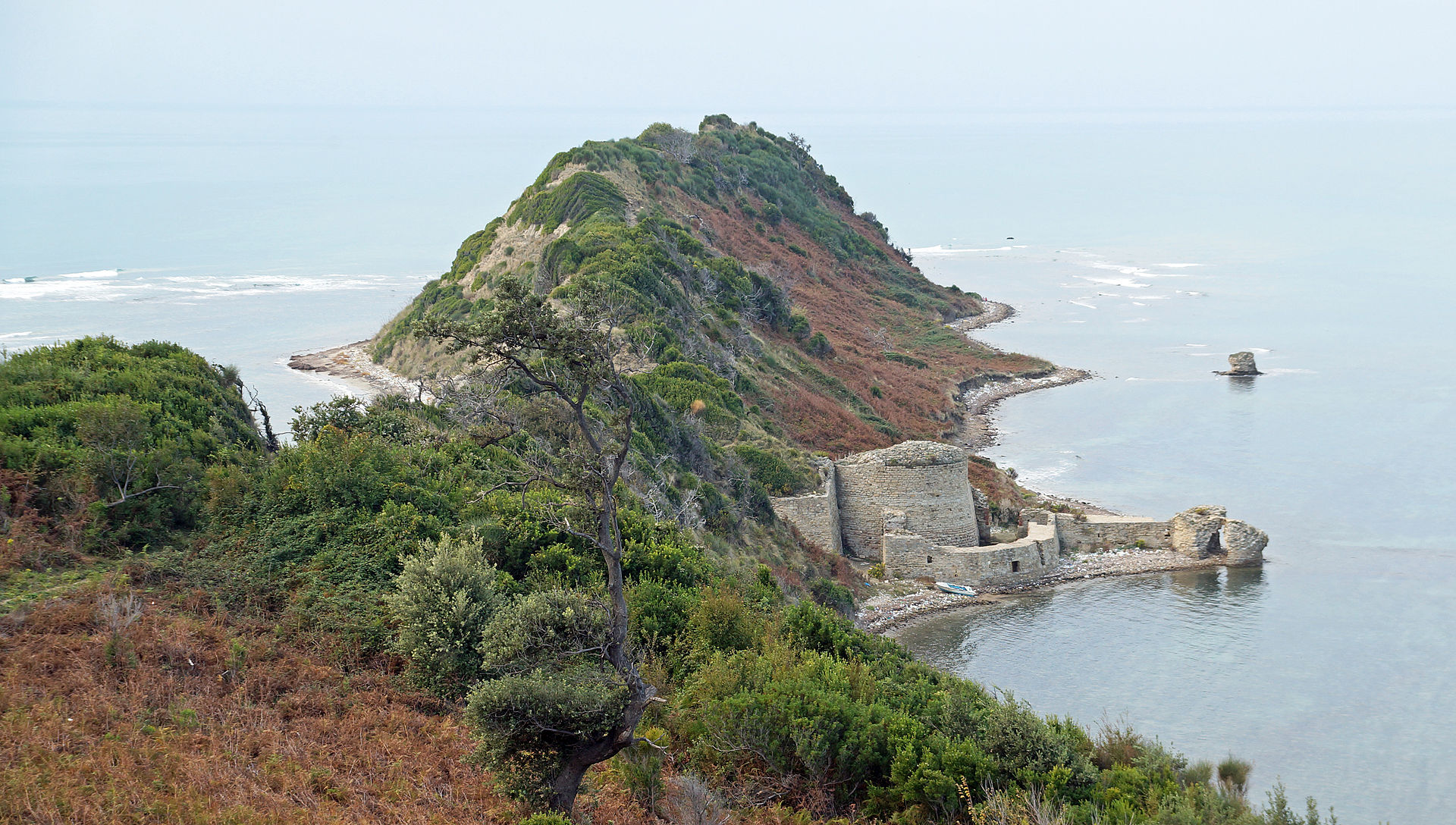Rodon is located 30 km in north of Durrës. As such, Rodon was the most suitable place for the Illyrian state of the Parthians to reach the sea, which gained particular importance when they were in conflict with Dyrrah.
Cape Rodon itself is a strip of land 550 m long and 70 m narrow, the sides of which jut out into the sea. About 400 m from the end, at its narrowest point, the strip is cut across by a strong wall equipped with towers, which protected the cape, both in the Middle Ages and in antiquity, from attacks from land, but not from the sea.
The above data prove Rodoni a fortified stronghold of the Parthians, which freed them from the need for the unpleasant service of Dyrrah/Epidamnus, from his political demands and taxes. Finally, the toponym Rodon shows that this pier was dedicated to Redon, the Illyrian god of navigation, who is depicted on coins as a boy with a triangular kausia
hat. An inscription in the “Porcinara” cave, on the eastern shore of the Otranto channel, shows that two
patrol ships of the century II were called Medaur and Redon, in honor of two Illyrian deities. The medieval castle was originally conceived by Princ Karl Topia who wanted to turn this place into a shipyard. After the first Siege of Kruja, the League of Lezha decided to build a series of fortifications to defend against Ottoman attacks. Among them, Skanderbeg chose Cape Rodon, with the aim of having a close outlet to the sea from Kruja. Construction began in 1450 and ended in 1452. Its defensive castle wall was 400 m long, equipped at the ends with powerful circular towers.
According to Marin Barleti, the castle was taken and destroyed by Ottoman forces in 1467, but in 1500 the castle was rebuilt by the Republic of Venice who equipped it with small-caliber artillery with key-shaped turrets. On the inner side, they have the form of a niche that is crossed by a round hole for extracting the muzzle of the cannon, above which there was a narrow slit. The Venetians dedicated the fortification to Saint Mark, whose reliefs can be seen on the walls of the fortification.


